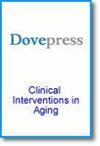Trajectory Groups of 72-Hour Heart Rate After Mechanical Thrombectomy and Outcomes
IF 3.7
3区 医学
引用次数: 0
Abstract
Background and Purpose: Elevated heart rate (HR) after mechanical thrombectomy (MT) was associated with an increased risk of adverse outcomes. However, optimal HR management after MT remains unclear. This study aimed to identify patient subgroups with distinct HR trajectories after MT and explore their association with outcomes.Methods: Acute ischemic stroke patients undergoing MT therapy were prospectively recruited from July 2020 to December 2022. Their heart rate indicators were collected every hour for 72 hours after MT procedure. Latent variable mixture modeling was used to separate subjects into five groups with distinct HR trajectories. The primary outcome was poor functional outcome (mRS score > 2) at 3 months. Additional outcome was all-cause mortality (mRS score = 6) at 3 months.
Results: A total of 224 patients with large vessel occlusion were enrolled, with a mean age of 65.2+14.0 years. Eighty-seven patients had a good functional outcome, and 137 patients had a poor functional outcome. Five distinct HR trajectories were observed: low (19.2%), moderate (33.0%), rapidly stabilized HR group (20.5%), persistently high HR group (21.0%), and very high HR group (6.3%). After adjusting for potential confounders, the HR trajectory group was independently associated with poor functional outcome at 3 months (P for interaction = 0.022). The risk of having poor functional outcome was increased in the rapidly stabilized HR group (odds ratio, 3.18 [95% confidence interval, 1.10– 9.19]), the persistently high HR group (odds ratio, 5.55 [95% confidence interval, 1.72– 17.87]) and very high HR group (odds ratio, 18.32 [95% confidence interval, 2.20– 95.52]) but not in the moderate group (odds ratio, 1.50 [95% confidence interval, 0.61– 3.69]), when compared with the low HR group. No significant association was found between trajectory group and 3-month all-cause mortality.
Conclusion: HR during the first 72 hours after MT may be categorized into distinct trajectory groups, which differ in relation to poor functional outcome event risks. The findings may help to recognize potential candidates for future HR control trials.
Key words: ischemic stroke, heart rate trajectory, mechanical thrombectomy, outcome
机械血栓切除术后 72 小时心率轨迹组和结果
背景和目的:机械血栓切除术(MT)后心率(HR)升高与不良预后风险增加有关。然而,MT术后的最佳心率管理仍不明确。本研究旨在确定 MT 术后心率轨迹不同的患者亚组,并探讨其与预后的关系:2020年7月至2022年12月期间,对接受MT治疗的急性缺血性卒中患者进行了前瞻性招募。在MT治疗后的72小时内,每小时收集患者的心率指标。采用潜变量混合模型将受试者分为五组,每组的心率轨迹各不相同。主要结果是3个月时的不良功能预后(mRS评分> 2)。附加结果是 3 个月时的全因死亡率(mRS 评分 = 6):共有 224 名大血管闭塞患者入选,平均年龄为 65.2+14.0 岁。87名患者功能预后良好,137名患者功能预后较差。观察到五种不同的 HR 轨迹:低 HR 组(19.2%)、中 HR 组(33.0%)、快速稳定 HR 组(20.5%)、持续高 HR 组(21.0%)和极高 HR 组(6.3%)。在对潜在的混杂因素进行调整后,HR轨迹组与3个月时功能预后差独立相关(交互作用 P = 0.022)。在快速稳定的 HR 组(几率比为 3.18 [95% 置信区间,1.10- 9.19])、持续高 HR 组(几率比为 5.55 [95% 置信区间,1.72- 17.87])和持续高 HR 组中,功能预后不良的风险增加。与低 HR 组相比,中等 HR 组(几率比,1.50 [95% 置信区间,0.61-3.69])与极高 HR 组(几率比,18.32 [95% 置信区间,2.20-95.52])没有明显差异。轨迹组与 3 个月全因死亡率之间无明显关联:结论:MT术后72小时内的心率可分为不同的轨迹组,这些组别在不良功能预后事件风险方面存在差异。这些发现可能有助于识别未来心率控制试验的潜在候选者。
本文章由计算机程序翻译,如有差异,请以英文原文为准。
求助全文
约1分钟内获得全文
求助全文
来源期刊

Clinical Interventions in Aging
GERIATRICS & GERONTOLOGY-
CiteScore
6.20
自引率
2.80%
发文量
193
期刊介绍:
Clinical Interventions in Aging, is an online, peer reviewed, open access journal focusing on concise rapid reporting of original research and reviews in aging. Special attention will be given to papers reporting on actual or potential clinical applications leading to improved prevention or treatment of disease or a greater understanding of pathological processes that result from maladaptive changes in the body associated with aging. This journal is directed at a wide array of scientists, engineers, pharmacists, pharmacologists and clinical specialists wishing to maintain an up to date knowledge of this exciting and emerging field.
 求助内容:
求助内容: 应助结果提醒方式:
应助结果提醒方式:


